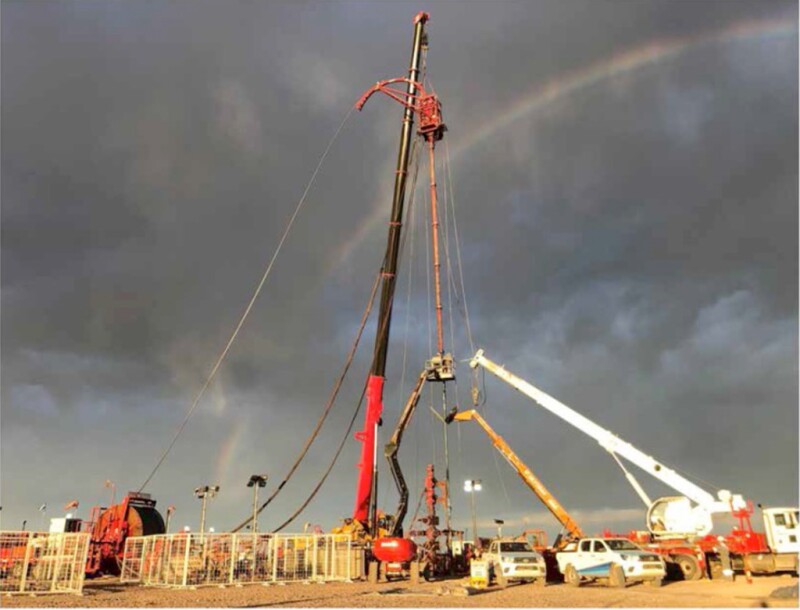The authors introduce a successful alternative for repairing casing failures on an unconventional well that allows hydraulic fracture continuity to accomplish the original fracturing plan, considering well-integrity conditions throughout the entirety of well production life as the main intervention objective. The resulting well production was higher than the expected estimated ultimate recovery (EUR) for the landing zone.
Introduction
In December 2020, during the execution of hydraulic fracturing on a three-well pad in the Vaca Muerta unconventional shale reservoir, an annular communication suddenly occurred in one of the wells. This event took place during the execution of the ninth fracturing stage of 33 planned.
After a thorough pressure analysis of this event and verification that all pressure barriers were correct and in place, it was decided to stop fracturing treatments in this well and complete pending fracturing stages in the other two wells of the pad until the problem was well understood and a solution was found.
Diagnostics
The initial good condition of the well barrier was verified by a positive casing-integrity test (CIT) at 13,000 psi before the first fracturing pump. Maximum treatment pressure was kept under the CIT pressure, with an acceptable safety factor margin maintaining the well with annular communication, and was continuously pressure monitored.
Once the fracturing fleet finished the intervention and left the pad, the engineering focus of the completion was oriented to determine the location and geometric characteristics of the casing leak.

